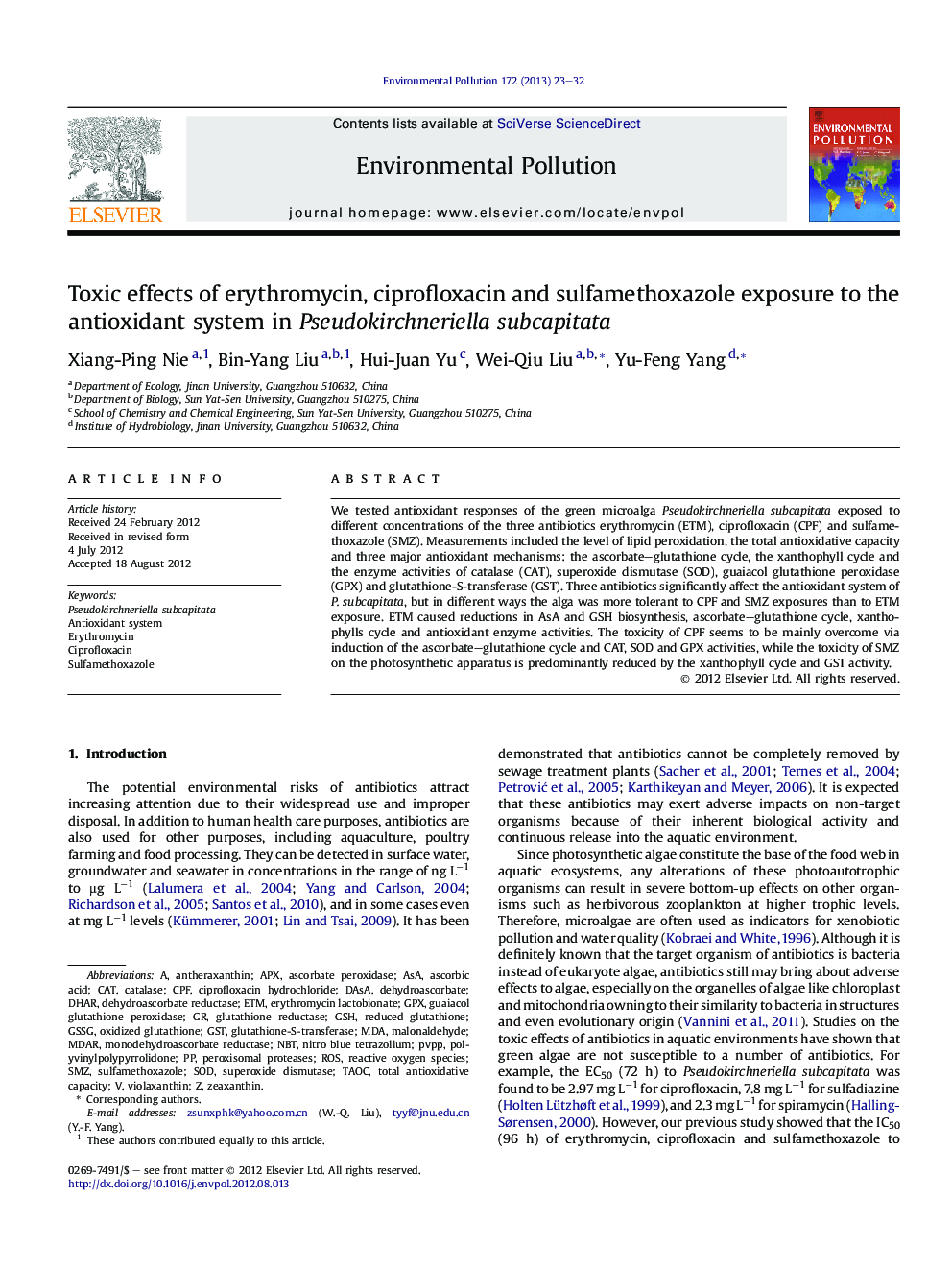| Article ID | Journal | Published Year | Pages | File Type |
|---|---|---|---|---|
| 4424712 | Environmental Pollution | 2013 | 10 Pages |
We tested antioxidant responses of the green microalga Pseudokirchneriella subcapitata exposed to different concentrations of the three antibiotics erythromycin (ETM), ciprofloxacin (CPF) and sulfamethoxazole (SMZ). Measurements included the level of lipid peroxidation, the total antioxidative capacity and three major antioxidant mechanisms: the ascorbate–glutathione cycle, the xanthophyll cycle and the enzyme activities of catalase (CAT), superoxide dismutase (SOD), guaiacol glutathione peroxidase (GPX) and glutathione-S-transferase (GST). Three antibiotics significantly affect the antioxidant system of P. subcapitata, but in different ways the alga was more tolerant to CPF and SMZ exposures than to ETM exposure. ETM caused reductions in AsA and GSH biosynthesis, ascorbate–glutathione cycle, xanthophylls cycle and antioxidant enzyme activities. The toxicity of CPF seems to be mainly overcome via induction of the ascorbate–glutathione cycle and CAT, SOD and GPX activities, while the toxicity of SMZ on the photosynthetic apparatus is predominantly reduced by the xanthophyll cycle and GST activity.
► Antibiotics may affect the antioxidant system of Pseudokirchneriella subcapitata. ► Erythromycin decreased AsA, GSH biosynthesis and antioxidant enzyme activities. ► Ciprofloxacin and sulfamethoxazole were lower toxic than erythromycin.
